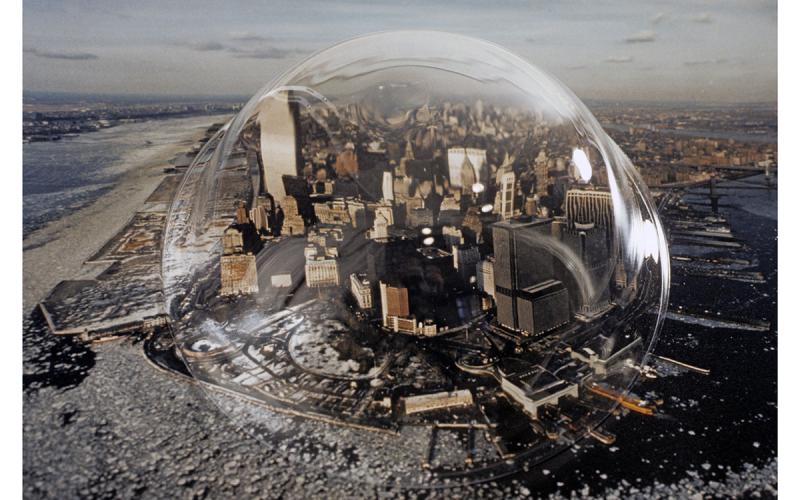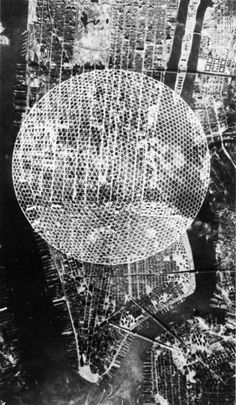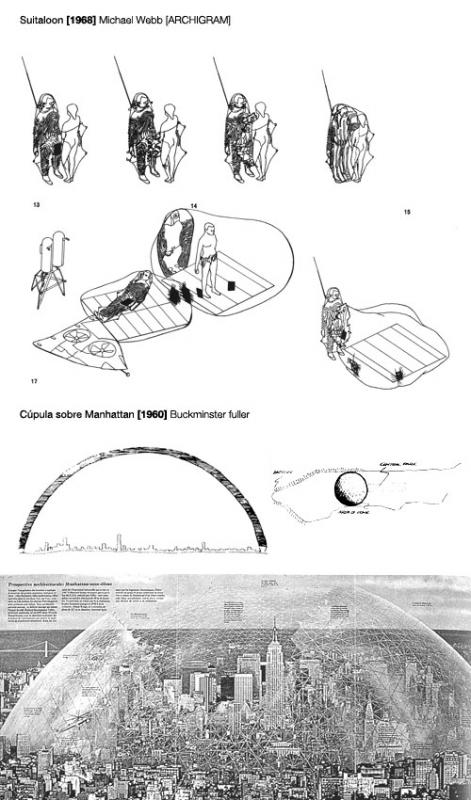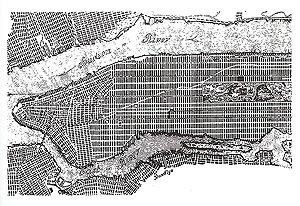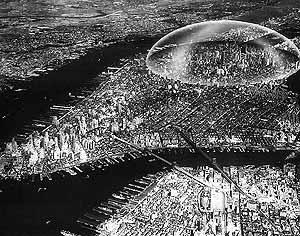
Proyecto para la Isla de Manhattan en New York
- 1962 -
- BUCKMINSTER FULLER, Richard
- New York
- Estados Unidos
- Cúpula sobre Manhatthan [26-3-2017]
- Propuesta de Fuller en Manhatthan [26-3-2017]
- Diferentes propuestas de cúpulas geodesicas en ciudades americanas [26-3-2017]
FRAMPTON Kenneth., Historia crítica de la Arquitectura Moderna. Gustavo Gili. Barcelona, 1987.
.Pág.284-316.“Lugar, producción y escenografía; práctica y teoría internacionales desde 1962”
"Aparte de cierto erotismo subversivo (la parodia biológicamente funcionalista evidente, por ejemplo, en el Sim Centre o ‘centro del pecado’, dibujado por Michael Webb en 1962), Archigram estaba más interesado en el seductor atractivo de las imágenes de la era espacial y, siguiendo la línea de Fuller, en el tono apocalíptico de la tecnología de supervivencia, que en los procesos de producción o en la relevancia de esa sotisficada técnica para las labores del momento. Pese a toda su ironía superficial , las ‘Walking Cities’ o ‘ciudades andantes’ dibujadas por Ron Herron en 1964 parecían claramente estar merodeando por un mundo en ruinas después del desastre de una guerra nuclear. Al igual que el ‘explorador Glomar’ de Howard Hughes, sugieren una suerte de salvación de pesadilla, en la que hombres y artefactos son rescatados tras el cataclismo. Puede considerarse que estos gigantes son un paralelo de la propuesta de Fuller en 1962 para levantar una enorme cúpula sobre la totalidad del centro de Manhattan. Este pulmón de acero para la ciudad se proyectó como un escudo geodésico contra la contaminación, un dispositivo que sin duda podría usarse también como refugio antiatómico en el caso improbable de un descuido nuclear. Con una despreocupación similar, Archigram no veía razones para preocuparse de las consecuencias sociales y ecológicas de sus diversas propuestas megaestructurales, de las que la ‘Plug-in-City’ o ‘ciudad para enchufar’, ideada por Peter Cook en 1964, era un ejemplo típico. De igual modo, en su obsesión por las cápsulas suspendidas de la era espacial , Dennis Cropmton, Michael Webb, Warren Chalk y David Greene no se sentían en la obligación de explicar por qué alguien podía decidir vivir dentro de una maquinaria tan cara y sofisticada, pero al mismo tiempo en unas condiciones brutalmente angostas. Con Banham representando los ademanes narcisistas de Visnú en su burbuja hinchable y solipsista, equipada con un aparato de alta fidelidad y presumiblemente otras comodidades (como homenaje, probablemente, al espíritu inculto de la letra irónica de Fuller para la canción Roam Home to a Dome, véase página 242), todos ellos proponían valores espaciales que estaban muy por debajo del Existenzminimum establecido por aquellos funcionalistas de antes de la guerra a quienes supuestamente".
